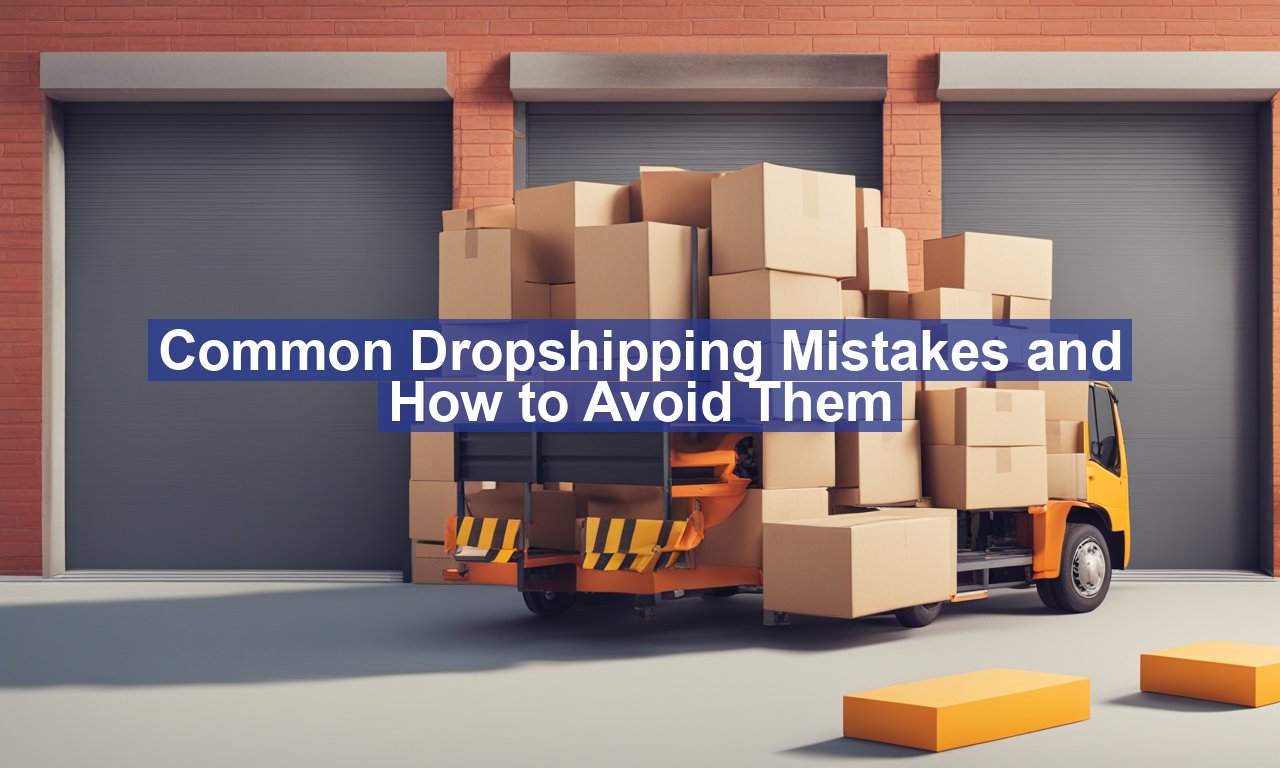Common Dropshipping mistakes and how to avoid them, starting a dropshipping business can be an enticing venture with the promise of minimal investment, no inventory hassles, and the flexibility to work from anywhere. Yet, beneath this appealing facade lie pitfalls that can derail your entrepreneurial journey if not navigated carefully.
In this comprehensive guide, we’re diving into common dropshipping mistakes and arming you with actionable solutions to avoid them. This isn’t just another list of business blunders; it’s your map to creating a resilient, thriving online store with staying power.
Common Dropshipping Mistakes and How to Avoid Them Step-by-Step Guide
Overlooking Market Research
One of the most significant missteps in dropshipping is diving in without adequate market research. Many assume that any product will sell if they list it attractively. However, understanding market demand, competition, and target audience preferences is crucial.
- How to Avoid It:
Invest time in market research. Explore platforms like Google Trends to identify trending products and analyze competitor strategies through tools such as SimilarWeb. Also, don’t forget to define your target audience and understand their buying behaviors.
Selecting the Wrong Suppliers
Your supplier can make or break your dropshipping business. Choosing unreliable or low-quality suppliers can lead to delays, poor product quality, and ultimately, unsatisfied customers.
- How to Avoid It:
Conduct thorough vetting of suppliers. Look for reviews, request samples, and establish open communication channels. Ensure your supplier is capable of timely deliveries and maintains product quality. A good resource for locating legitimate suppliers is Alibaba’s supplier guide.
Poor Website Design
First impressions matter. If your website is cluttered, difficult to navigate, or untrustworthy, potential customers will leave without looking back.
- How to Avoid It:
Focus on user experience (UX). Ensure your website design is clean, responsive, and intuitive. Tools like Shopify can provide design guidelines to enhance user interaction. Pay attention to fast loading speeds, simple checkout processes, and compelling product descriptions.
Neglecting Customer Service
In the absence of face-to-face interactions, excellent customer service becomes the cornerstone of a successful ecommerce business. Ignoring customer inquiries can tarnish your reputation and deter repeat purchases.
- How to Avoid It:
Provide multiple channels for customer support, such as email and live chat. Use tools like Zendesk to streamline and manage customer interactions efficiently. Respond promptly and resolve issues professionally to foster trust and loyalty.
Setting Incorrect Pricing
Incorrect pricing can be detrimental. Pricing too high might turn away potential customers, while pricing too low affects your profit margins and can undermine perceived product value.
- How to Avoid It:
Develop a reliable pricing strategy. Consider the cost of goods, shipping fees, and competitor pricing. Use consumer psychology tips such as charm pricing to enhance perceived value.
Lack of Marketing Efforts
Starting a dropshipping business doesn’t guarantee sales. Without effective marketing strategies, your products remain hidden in the vastness of the internet.
- How to Avoid It:
Invest in a multi-channel marketing approach. Leverage social media platforms, utilize SEO strategies, and consider pay-per-click advertising to reach a wider audience. Resources like Neil Patel’s Blog offer valuable insights on improving your digital marketing campaigns.
Failing to Test Your Store
Launching without testing your store can lead to unforeseen issues, from broken links to transaction failures, which can deter customers and damage credibility.
- How to Avoid It:
Conduct comprehensive tests before launch. Go through every page, place a few test orders, and scrutinize the mobile experience. Regularly update and refine your store based on customer feedback and technological advancements.
Ignoring Legal Requirements
Running a dropshipping business means complying with various legal standards, from consumer protection laws to data privacy regulations. Overlooking these can lead to fines or business closures.
- How to Avoid It:
Stay updated with the legalities of ecommerce. This includes ensuring you have clear terms and conditions, a detailed privacy policy, and compliance with tax regulations. Consulting with a legal expert can help you address any overlooked areas.
Conclusion: The Path to Dropshipping Success
Common Dropshipping mistakes and how to avoid them sets the groundwork for a successful dropshipping business. By conducting thorough market research, selecting reliable suppliers, designing an engaging website, offering exceptional customer service, strategizing your pricing, implementing robust marketing, testing rigorously, and complying with legal requirements, you can pave the way to sustainable ecommerce success. Remember, the world of dropshipping is ever-evolving. Stay adaptable, continue learning, and let diligence and resourcefulness be your guiding principles.


